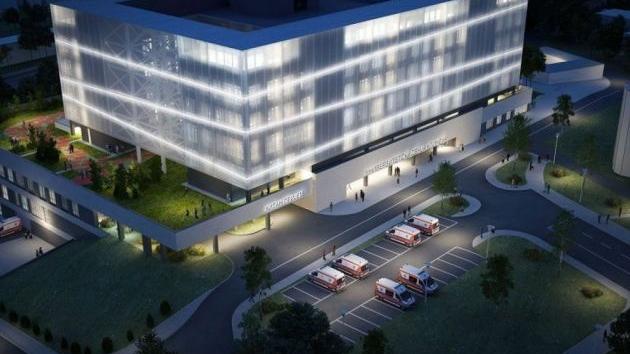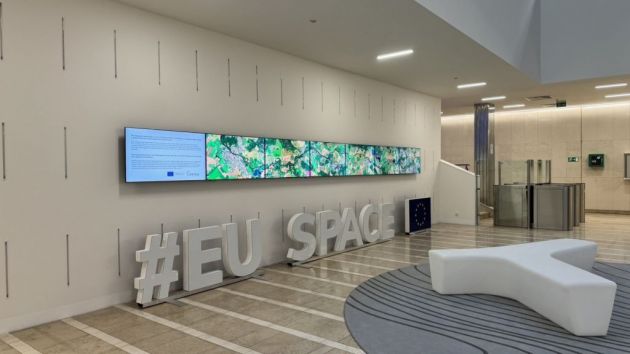Should We Look Up to Colombia? – How the Insufficiently Greened Belgrade Could Make It Through Another Hellish Summer
Source: eKapija
 Thursday, 21.03.2024.
Thursday, 21.03.2024.
 09:11
09:11
 Thursday, 21.03.2024.
Thursday, 21.03.2024.
 09:11
09:11
Enough to make us go “green” with envy: Medellin, Colombia (Photo: Pixabay/ Ulises Casaraz)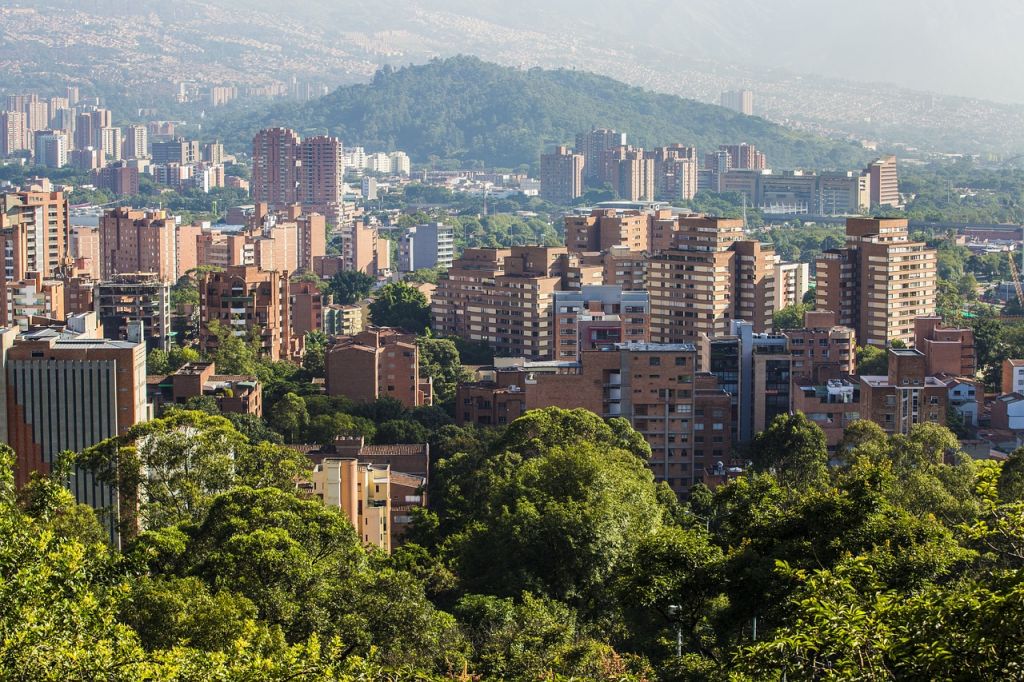

The calendar winter has just ended, the warmest one since 1888, and we are already seeing articles about the hellish summer we should prepare for. While we are reading warnings of the temperature exceeding 30 degrees in two months, it only remains for us to prepare psychologically, because it is too late for the other type preparation – the urban planning kind. At least when it comes to this (hellish) summer.
Residents in cities will require the most preparation due to the effect of an urban heat island. This is a phenomenon whereby urban surfaces act as heat collectors, which leads to higher temperatures in cities compared to the surroundings.
The residents of Belgrade are especially jeopardized. Nearly the entire area of the wider city core, including a big part of New Belgrade, is a big heat island with 40-50 tropical nights a year, according to the map that was created by climatologists from the Faculty of Physics at the University of Belgrade, professor Dr. Vladimir Djurdjevic and his associate Lazar Filipovic.
However, it doesn’t have to be that way. Ten thousand kilometers from Serbia, in a country which we associate with crime and chaos, there is Medellin, the second biggest city in Colombia. The increased urbanization exposed the city, with a populace of around two and a half million, to the effect of an urban heat island. In order to reduce the effects of the temperature increase, Medellin started the “green corridors” program in 2016.
Initially, the project included the planting of around 120,000 individual plants and 12,500 trees along roads and in parks, and by 2021, 2.5 million new smaller plants and 880,000 trees were planted throughout the city. The idea was to connect the green spaces in the city through avenues and streets surrounded by trees and shades. The initial investment for the establishment of the project amounted to USD 16.3 million, and the annual maintenance costs amounted to USD 625,000 in 2022, according to the local government.
The project became known all over the world thanks to the impressive city cooling results, but also the reduction of the air pollution. Could Medellin act as a model for other cities, including Belgrade?
Genius solutions vs. investors
For a start, it is encouraging that Belgrade is aware of the problem. According to the General Regulation Plan (GRP) of the System of Green Areas, adopted in 2019, “the increase of median monthly and median annual temperatures is evident, which, among other things, is a consequence of the urbanization.” The plan points out that the existing public green areas should be increased from 2.83% to 3.42% and that the total green areas and forests should be increased from 12.38% to 22.74%.
On over 200 pages, this extensive document is the basis for the realization of the system of green areas in Belgrade and shows in detail how to achieve the goal – the planned system of green areas should be upgraded into the green infrastructure of the city.
Whether the greening guidelines, measures and rules are being honored is something we couldn’t learn from the Urban Planning Institute, which prepared the plan. However, the Ministarstvo Prostora (“Ministry of Space”) organization has no doubt about what’s going on – the plan and the ideas are not the problem, the priorities are.
– If the city authorities had more loyalty to the residents, and less to the investors, and if they were open to a wider public dialogue about which direction Belgrade should develop in, there is no doubt that there would be a myriad of genius solutions for the greening of the city, even those parts that may seem irreversibly destroyed now – Olga Andric, architect and member of the Ministarstvo Prostora collective, notes for eKapija.
Shopping center instead of a forest
According to the data from the GRP, the existing green areas in Belgrade, which include green corridors and parks, take up 2,208 hectares (2.83%). That number, as said, needs to be increased to 3.42%. In total, there is currently 9,653 ha (12.38%) of green areas and forests, and 8,408 ha (10.79%) is planned, which will amount to a total of 17,726 ha, or 22.74%.
_____________________
There were ideas about greening even in last century, when the winters were not so warm and summers not so hellish. A Bezanija park-forest of as much as 308.5 hectares was planned in New Belgrade, with field hockey, rugby, basketball, volleyball, mini-handball, tennis, badminton and football fields, a small shooting range, bowling alleys, bicycle and motorcycle lanes, a hippodrome and a winter sports center were planned, as revealed in the book “Tajna Novog Beograda” (“The Secret of New Belgrade”) by Zoran Lj. Nikolic and Mirko Radonjic. However, instead of New Belgrade’s Bois de Boulogne, as it was named, which would increase air humidity, lower the temperature and maintain freshness in the city in the summer, in the 1980s, we got a residential neighborhood.
_____________________
– When adopting the General Regulation Plan of the System of Green Areas, an amendment was submitted by the then member of the city parliament Aleksandar Martinovic saying that the conditions and guidelines of that plan were considered orientational during its implementation through the preparation of the detailed regulation plan, that is, a plan of a lower order – our interviewee points out.
That amendment, she says, runs counter to Article 3 of the Law on Planning and Construction, which proscribes the principle of the horizontal and vertical coordination of the planning documents, which pertains precisely to the harmonization of the lower-order plans with the higher-order ones, but also the harmonization of spatial development with the social, economic, environmental and other aspects of life.
– The very fact that a stipulation which is not in line with the law and which pronounces it non-binding has been inserted into such an important plan tells us that it would be futile to expect any efforts by the city administration directed toward the monitoring of the implementation of this plan, so it is practically left to the good will of the investors. For example, at the beginning of this year, there was the public inspection of the Detailed Regulation Plan of the Zmaj complex, where the parcels on which the General Regulation Plan of the System of Green Areas envisages a forest are intended for commercial features – emphasizes Andric.
According to the GRP, the existing public green areas need to be increased from 2.83% to 3.42% (Photo: I.S./eKapija)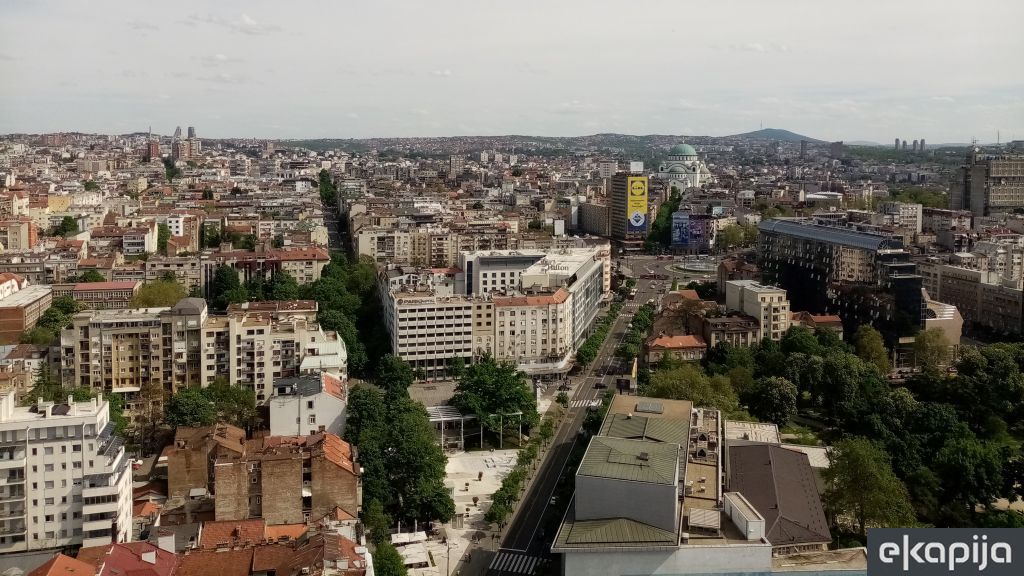

eKapija’s interviewee says that another problematic aspect is that the land, which, according to the plan, is meant for green areas, is registered in the land registry as urban building land, that is, land meant for the construction of buildings.
– That additionally encourages the establishment of a principle by which it is quite alright to build a shopping center in a location where a forest was planned to stay – says Andric.
According to her, the cause of the occurrence of heat islands is precisely in the purpose of the land and the rules according to which construction is done on it, because a densely built area quickly becomes a place where heat is accumulated.
– The index map of tropical nights in Belgrade that was prepared by professor Vladimir Djurdjevic and his associate Lazar Filipovic from the Faculty of Physics, which was added to by Dr Ivan Simic from the Faculty of Architecture, who connected it to the map of the urban matrix of Belgrade, creating a composite map, clearly speaks in favor of the argument that urban heat islands are a result of the interaction of natural parameters and human impact. An adequate implementation of the General Regulation Plan of the System of Green Areas plays a big role in reducing the heat island effect, since green areas are natural regulators of temperature – points out Olga Andric.
Secretariat announcing forestation in next three years
The Secretariat for Environmental Protection, which commissioned the preparation of the GRP, says for eKapija that, for the purpose of the realization of the plan, in 2021, it prepared the project of forestation, which will be realized in the next three years.
– The parcels for which the project was prepared are owned by the City of Belgrade, and the projects of forestation are prepared for around 70 hectares. The activities will be realized in the next three years. In the period between 2022 and now, forestation has been done on select parcels in the municipalities of Zvezdara, Palilula, Cukarica. The total number of saplings to be planted in this forestation campaign is around 16,500 tree saplings and around 27,000 bush saplings – they say at the secretariat.
Modest numbers when compared to the impressive 880,000 trees in Medellin. That the numbers are part of the problem is also shown by the information that, according to the secretariat, Belgrade has 11,365 ha of green areas. The GRP, however, says that the capital of Serbia has 9,653 ha of green areas and forests, which comprises 12.38% of the territory of the Serbian capital.
– The city of Belgrade has over 30% of green areas, which includes 16% forests and 14.6% public green areas. The current forestation rate of the administrative area of Belgrade, that is, of all 17 municipalities, is slightly lower compared to the optimal one, which amounts to 27%. Belgrade has 11,365 ha of green areas of the total administrative territory of the city, consisting of: parks, squares, greenery alongside the traffic routes, river islands, green areas in settlements and Belgrade tree lanes with around 69,000 trees – they say at the secretariat.
A tree lane in Medellin (Photo: Pixabay/William Pomares)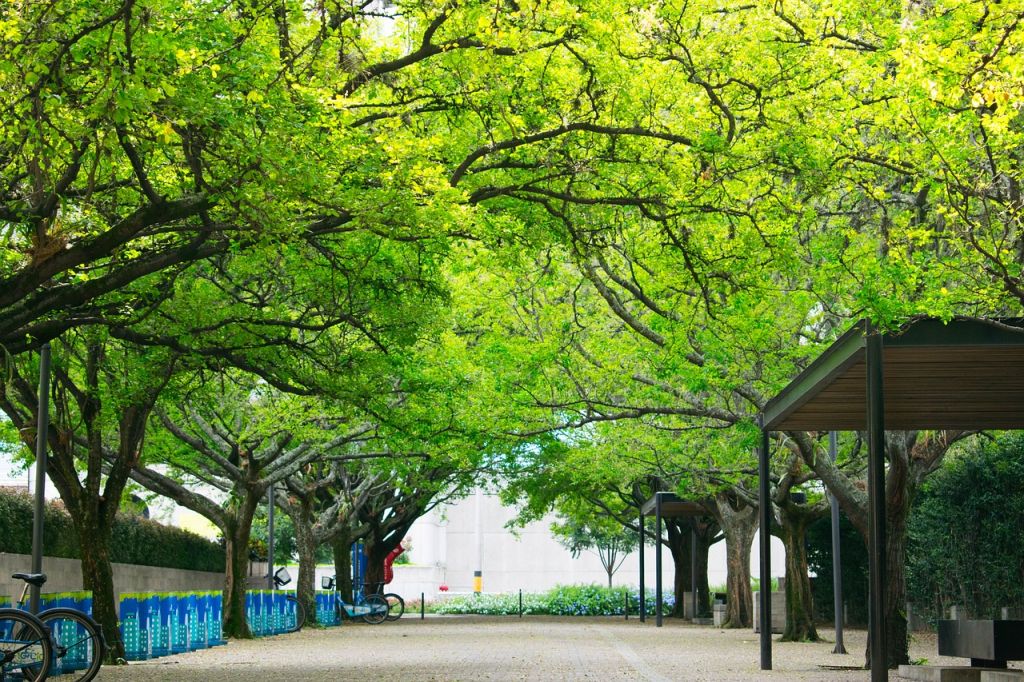

Said campaigns of forestation of 70 hectares of forest land to the end of protecting from floods, landslides, the forming of the city’s green ring, will achieve a range of benefits, the secretariat says.
– With the range of actions that the secretariat will carry out in the coming years when it comes to the forestation of Belgrade, we will influence the raising of the quality of the environment, the quality of air (CO2 reduction), the reduction of the greenhouse effect, the reduction of noise, the protection of land, the protection of waters, the increase of the forestation rate of Belgrade (up to 30%), whereby we would get the potential for the production of biomass (energy), which will be irreplaceable in the coming years – the secretariat explains.
Zagreb has 46% trees in the city, Belgrade 22%
If the city authorities need an idea for increasing the green infrastructure, they don’t have to go all the way to Medellin, as they can find good examples in the neighborhood. According to the 2018 survey of the European Environment Agency, Belgrade is 28th of the 37 analyzed cities by the share of green areas and green infrastructure.
Green infrastructure which encompasses parks, street trees, gardens, comprises, on average, 42% of the city area in 38 member states. Caceres in Spain holds the record, with 96% green areas, followed by Zagreb with 74% green infrastructure, and the third spot belongs to Ljubljana with 67% greenery. At the other end of the list is Trnava, Slovakia, with only 7%. According to these data, Belgrade is below the European average, with 31% green areas.
However, observed by another analyzed aspect, the publicly available green areas, Belgrade is 8% above the average of 3%. Cities like Geneva, The Hague and Pamplona have over 15% available green areas in the city area.
The third analyzed category, the tree coverage in the urban city core, Belgrade, with 22%, is below the average of 30%. Finland and Norway have the most trees, and Cyprus, Iceland and Malta the least. Our neighbors are once again giving us reason to go green, except with envy – 50% of Ljubljana’s territory and 46% of Zagreb’s is covered in trees.
Ljubljana has 67% greenery (Photo: Simon Kovše/Unsplash)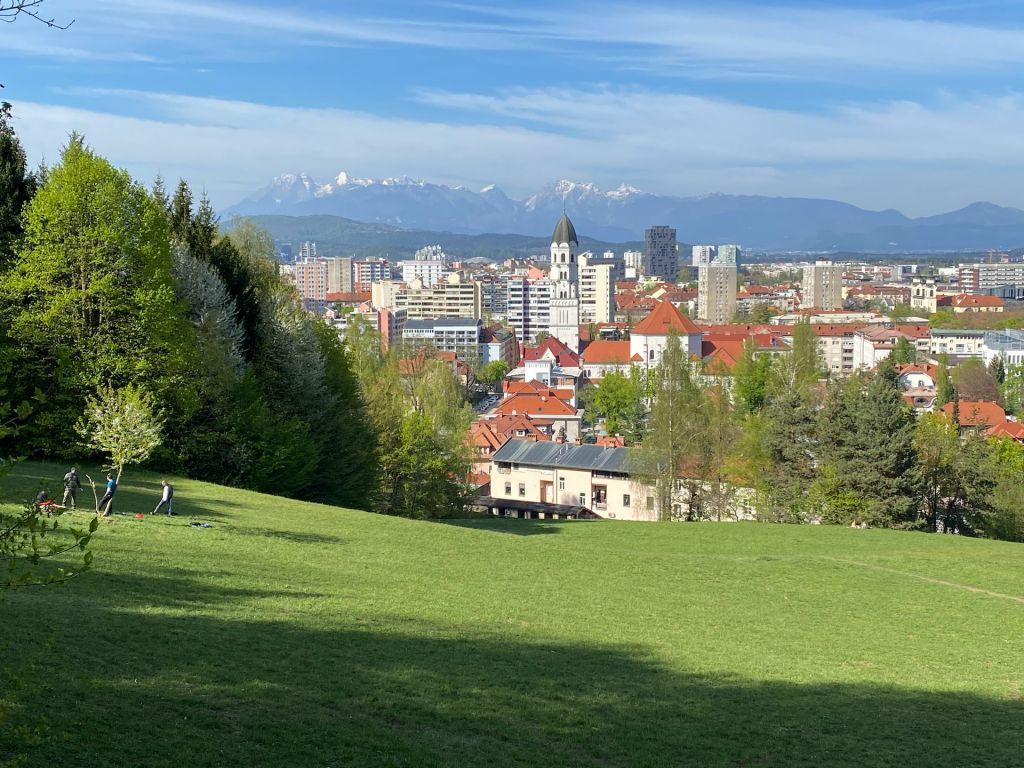

Our interviewee notes that a good green infrastructure network is also important in the context of sustainable urban mobility, water management, the use of public spaces and spaces for recreation, as well as other features which contribute to the overall quality of life in the city.
– The positive impact of greenery on the city climate is very easily experienced and felt, so it’s no wonder that we have often had the opportunity to see unsatisfied citizens joining together to fight the destruction of green areas – says Andric.
Future (does not) lie in strategies
The Secretariat for Environmental Protection reveals that the Strategy of Green Infrastructure of Belgrade is being planned. As they say, with the adoption of the General Regulation Plan of the System of Green Areas of Belgrade, the then vision of green regulations was realized and the planning basis was created for preserving the existing green areas and forming new ones, whose implementation is realized successfully.
– Considering the passage of time, there is a need for the upgrade of the regulations, which the Secretariat for Environmental Protection has recognized and started the preparation of the Strategy of Green Infrastructure of Belgrade – they note.
The strategy, they say, will overview all the spatial, environmental and institutional aspects of green infrastructure and their valuing through the prism of the ecosystem services, in order to ensure protection and improvement through the context of planning, design, construction and maintenance.
– As an integral part of the strategy, an action plan will be prepared as well, which will contain the measures and activities for the achieving of the goals of the strategy, which, in the long term, will contribute to the improvement of the quality of the living environment of Belgrade – they say at the secretariat.
Until the strategies are adopted and the plans start being implemented, what remains for the residents of Belgrade to do this summer is to look for a virtual escape in photographs of the green oases of Medellin. Or to go over to Zagreb and Ljubljana.
Marija Dedic
Tags:
Ministarstvo prostora
European Environment Agency
Olga Andrić
Vladimir Đurđević
Lazar Filipović
Belgrade
Medellin
green infrastructure
hellish summer
hottest summer
warmest winter
green corridors
heat island
urbanization
public green areas
General Regulation Plan of the System of Green Areas
climate change
Law on Planning and Construction
Zmaj complex
tropical nights
urban heat islands
forestation
Strategy of Green Infrastructure of Belgrade
Comments
Your comment
Naš izbor
Most Important News
Full information is available only to commercial users-subscribers and it is necessary to log in.
Follow the news, tenders, grants, legal regulations and reports on our portal.
Registracija na eKapiji vam omogućava pristup potpunim informacijama i dnevnom biltenu
Naš dnevni ekonomski bilten će stizati na vašu mejl adresu krajem svakog radnog dana. Bilteni su personalizovani prema interesovanjima svakog korisnika zasebno,
uz konsultacije sa našim ekspertima.


 Izdanje Srbija
Izdanje Srbija Serbische Ausgabe
Serbische Ausgabe Izdanje BiH
Izdanje BiH Izdanje Crna Gora
Izdanje Crna Gora


 News
News








